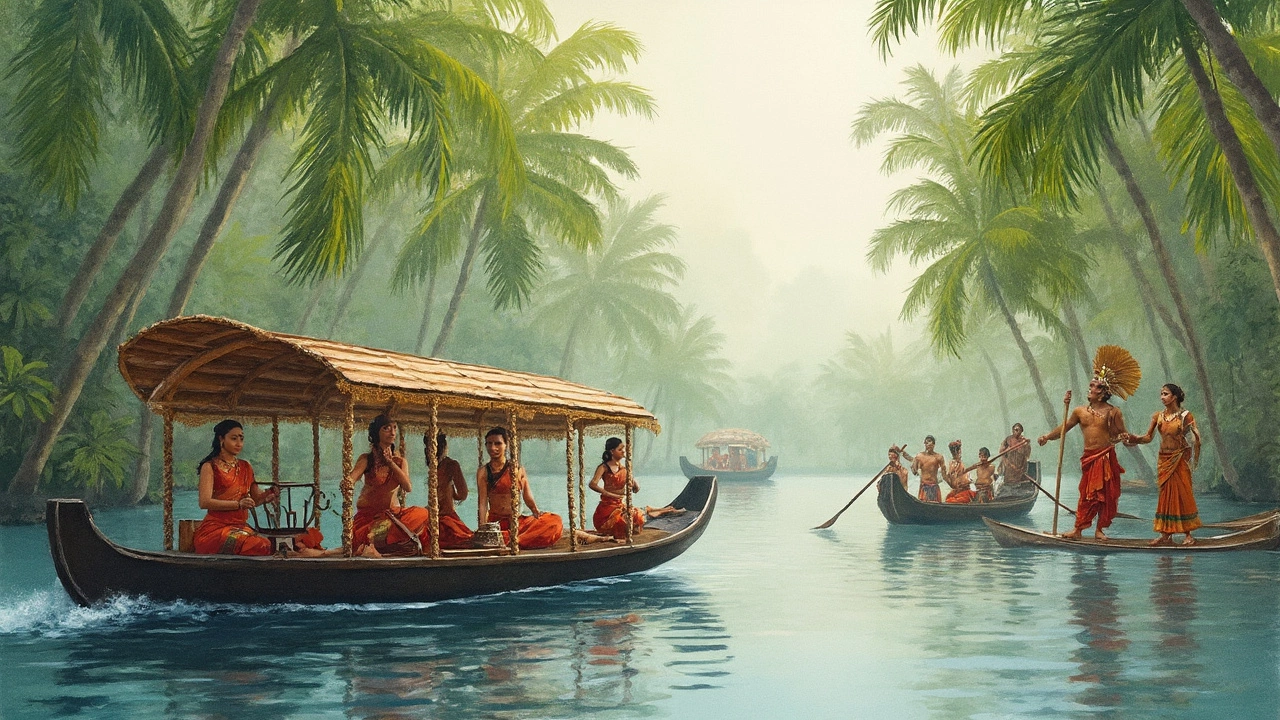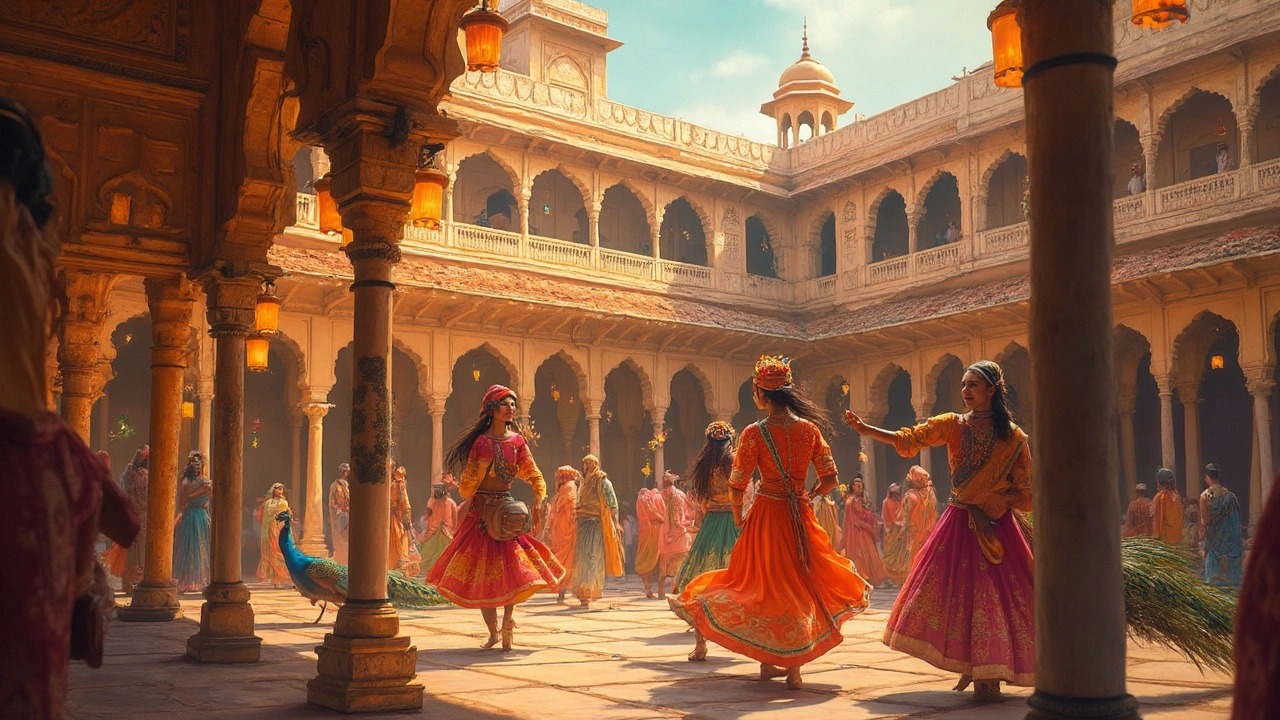India is a mind-bending tapestry—vibrant, chaotic, deeply rooted, and ever-changing. This is not a place where a single definition of 'culture' fits. Ask two people from opposite ends of the country to describe their traditions and you'll probably get stories that sound like they’re set in different worlds. But that's exactly what hooks people about India: its crazy diversity isn’t just about food or language; it's about everything from how you greet your grandma to the music playing during local festivals.
What Makes a Culture 'Rich' in India?
So, what are we really asking when we talk about a 'rich' culture in India? Are we talking about age-old traditions, jaw-dropping festivals, or the stuff of royal palaces? All of the above—and so much more. In India, culture means a living mix of historical legacy and everyday rituals that turn every corner into something new. There are more recognized religions, over 1,600 spoken languages (the Census of India in 2011 officially counted 1,652), and festivals that sometimes seem to outnumber the days in a year.
If you’re the kind of person who digs data, here’s a fun piece: The UNESCO list of Intangible Cultural Heritage has dozens of Indian traditions—the epic Kumbh Mela gathering, yoga, classical dance forms like Kathak and Bharatanatyam, and even lesser-known treasures like the Parsi Navroz.
When you stop to think about which culture is "richest," it really comes down to a few factors:
- Historical significance (how long the traditions have lasted and what impact they had)
- Preservation of art, music, language, literature, and rituals
- The local community’s way of life—how they live, love, eat, pray, and play
- The region’s openness to new influences
And let’s not forget—a rich culture isn’t about standing still. It’s about how traditions adapt and keep breathing in today’s world.
Rajasthan: Royalty and the Colors of the Desert
If you close your eyes and picture Indian grandeur, chances are you’re actually seeing Rajasthan. This northern state is the face of royal culture—camel parades, peacock dances, sandstone palaces glowing at sunset, and fabrics so bright you’d swear someone cranked up the color dial on reality.
Rajasthan’s richness starts in its history, with former princely states like Jaipur, Jodhpur, and Udaipur that actually still have living royalties (you'll sometimes see them hosting polo matches or opening art galleries). What keeps its culture magnetic is the seamless blend of Rajput valor and that over-the-top sense of celebration—from turbans that can double as ropes to mustache competitions. If you’re into numbers, Rajasthan has the largest concentration of UNESCO World Heritage forts and palaces in India—eight and counting, as of 2024.
Music here means sarangi and dholak mixing with the haunting voices of Manganiyar singers. Folk festivals aren’t just events. They’re full-blown experiences: think about the Pushkar Camel Fair, where 50,000 camels and as many people flood one otherwise-sleepy desert town. And you can’t ignore the food—dal baati churma, spicy laal maas, and sweets like ghewar are classics that have survived centuries. The crafts are on another level too—hand-painted pottery, Kundan jewelry, and intricate textiles led by stories spun in every stitch.
If you ever wanted to walk into a real-life storybook of kings, queens, and resilient desert communities, Rajasthan is where you go looking for it. The culture here is rich not just because of history, but because locals keep its spirit alive every single day.
Kerala: The Soulful Blend of Nature and Tradition
Slide south, and the vibe flips. Kerala, nicknamed "God’s Own Country," has a culture that feels tropical and serene, yet just as layered. Here, tradition and nature play off each other in ways you don’t see anywhere else. If you’re looking for proof that a region’s culture can be both old-school and progressive, Kerala nails it.
This is the state where Kathakali dancers paint their faces in technicolor and tell stories that are centuries old—while a street over, entrepreneurs are launching Ayurveda-inspired startups. Kerala’s calendar is jam-packed with astonishing festivals, especially Onam. Nowhere else do you see whole towns covered in carpets of flowers (athapookalam), snake boat races, and 10-day temple feasts that feed everyone, regardless of religion or background.
Speaking of inclusivity, here’s a stat that matters: Kerala consistently tops the Human Development Index for Indian states—literacy, life expectancy, and gender equality are all on the high end (the 2023 literacy rate, according to the state government, sits at 96.2%). That kind of progress shapes the day-to-day, from art and education to how people show hospitality. This is also the land of ‘sadhya’, a vegetarian feast served on banana leaves and made up of 15-30 dishes at once. It says a lot about a culture where meals are about sharing and celebrating, not just eating.
Visitors are just as likely to be invited into a home as they are to find themselves learning old Dravidian chants in a temple. Kerala’s culture absorbs influences—from Judaism (Cochin Jews), Christianity (the state has one of the world’s oldest Christian communities), Islam, and indigenous tribal communities—into something that feels uniquely welcoming.

West Bengal: Literary Tradition and Artistic Powerhouses
No talk about rich cultures in India is honest without spotlighting Bengal. If you care about literature, theater, bold food, and a stubborn spirit of debate and protest, West Bengal is impossible to ignore. Kolkata, its capital, produced the country’s first Nobel Prize winner, Rabindranath Tagore, who basically summoned a renaissance in Indian literature and music with his pen.
Bengal’s festivals are off the charts. Durga Puja is the big one—it’s not just a religious event, but an explosion of public art. Every autumn, entire neighborhoods build staggering, themed displays, blending ancient mythology and pop culture references so well that over 20 million people visited the city’s pandals in 2023 (as per Times of India stats). The street food scene—kathi rolls, puchkas, maach bhaja—has inspired copycats all over India, but nothing tastes the same outside Bengal.
This region’s culture goes far beyond nostalgia. Bengal has always been fiercely contemporary—writers here never stop questioning, artists jump between tradition and rebellion, and the music ranges from Rabindra Sangeet to Baul folk to modern fusion. The bookstores and coffee houses lining College Street have shaped political debates for generations. Bengal’s crafts run the gamut: handwoven saris (especially Baluchari and Jamdani), terracotta art, and the dazzling painted clay dolls of Krishnanagar.
Ask anyone who grew up here, and they’ll tell you: Being ‘Bengali’ means carrying a certain pride in art, ideas, and refusing to follow the herd. There's richness here that isn’t just held in old traditions, but in how actively they’re being challenged and reinvented every single year.
Punjab: Spirit, Celebration, and Culinary Fireworks
If the heart of India’s richness is its spirit, then Punjab is practically overflowing with culture. This is the northwestern homeland of the Sikhs, whose golden-tipped temples and traditions of service define so much of what outsiders think of as “Indian hospitality.” But step deeper and you’ll see the beating pulse of a people who treat celebration as a way of life.
Everyone’s heard of Bhangra—those energetic dances that make it almost impossible to stand still. If there’s a wedding, a harvest festival (Vaisakhi), or a new baby, don’t expect a quiet gathering. Punjab is intensely social. The fields and small towns echo with loud laughter, dhol beats, and that famous Punjabi openness. There's a saying here: A guest is God—they don’t just say it; they live it.
Punjab’s cuisine is the heavyweight champion. Dishes like butter chicken, sarson da saag with makki di roti, and rich Punjabi dals have conquered Indian restaurants from London to New York. Here’s a wild fact: The largest community kitchen in the world—Guru Ka Langar at Amritsar’s Golden Temple—feeds an estimated 100,000 people, free, every single day. This isn’t just about food, but about the Sikh principle of equality and sharing—a core piece of Punjab’s rich culture.
The music scene shows off the mix—Gurbani (devotional Sikh music), folk ballads about lost lovers and epic battles, plus a modern Punjabi pop industry that’s exploded on YouTube and Spotify alike. Add in Ludhiana’s annual Kila Raipur Rural Olympics, where farmers compete in daredevil tractor races and tug-of-war, and you’ve got culture that’s bold, generous, and wildly alive.
A Look at Cultural Wealth: How Regions Compare
So, which culture is truly the richest in India? Tricky question. It’s like holding up a diamond and arguing about which facet shines brightest. Each region brings something unique—sometimes even within the same state, one side of a river celebrates a different festival, wears different clothes, and cooks food the other side has never tasted.
Take a glance at this table—a snapshot that shows just how broad and deep India’s cultural roots go:
| Region | Famous For | UNESCO Heritage Sites | Unique Festivals | Top Art Forms |
|---|---|---|---|---|
| Rajasthan | Palaces, Folk Music | 8 (Forts, Palaces) | Pushkar Fair, Teej | Miniature Paintings, Puppetry |
| Kerala | Ayurveda, Backwaters | 2 (Western Ghats, Sites of Kochi) | Onam, Thrissur Pooram | Kathakali, Mohiniyattam |
| West Bengal | Literature, Durga Puja | 3 (Sundarbans, Shantiniketan) | Durga Puja, Poila Boishakh | Rabindra Sangeet, Chau Dance |
| Punjab | Music, Sikhism | 1 (Harmandir Sahib) | Vaisakhi, Lohri | Bhangra, Giddha |
At the end of the day, richness in Indian culture isn’t a contest. The variety is the treasure. Some areas are heavy on historical grandeur (like Rajasthan), some champion intellectual and artistic revolutions (Bengal), others blend old ceremony with progressive ideals (Kerala), and some overflow with warmth and celebration (Punjab). Pick what draws you—one visit is never enough. Every time you travel or even taste food from a different Indian region, you’re pulling up roots from centuries past—and probably catching a glimpse of the wild energy that makes the Indian culture so unforgettable.
